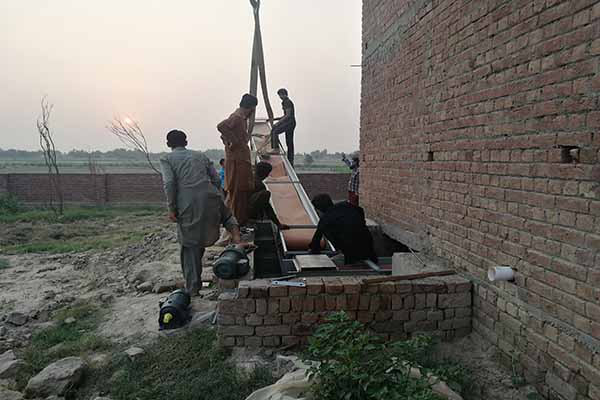Building a Chicken House with an Efficient Ventilation System: A Guide for Farmers and Investors
Understanding the Importance of a Ventilation System in Chicken Houses
A chicken house with a proper ventilation system is crucial for the health and productivity of your poultry. Poor ventilation can lead to various issues, including respiratory diseases, ammonia build-up, and reduced egg production. Here are some key points to consider when building a chicken house with an efficient ventilation system.
Designing the Chicken House
The layout of your chicken house should be designed to maximize the flow of fresh air while minimizing the entry of external contaminants. Here are some tips for designing an effective chicken house:
- Size and Space: Ensure that the space is adequate for the number of chickens you plan to house. Overcrowding can lead to increased ammonia levels and disease outbreaks.
- Location: Choose a site that provides shade and is away from heavy traffic and other poultry farms to reduce the risk of disease transmission.
- Orientation: The house should face the prevailing winds to facilitate better air exchange.
- Roof Pitch: A sloping roof can help in channeling rainwater away from the chickens and preventing leaks.
Types of Ventilation Systems
There are several ventilation systems to consider for your chicken house:
- Natural Ventilation: Utilizes natural convection currents to exchange air within the house. It is cost-effective but requires careful design to ensure adequate air exchange rates.
- Mechanical Ventilation: Involves the use of fans and fans to control the air flow in the chicken house. This system is more expensive but offers better control and can be used year-round.
- Mixed Ventilation: Combines elements of both natural and mechanical ventilation to achieve the optimal air exchange rates.
Key Components of an Efficient Ventilation System
To ensure the effectiveness of your ventilation system, consider the following components:
- Intakes: These are openings at the bottom of the house that allow fresh air to enter. Ensure they are protected from vermin and birds.
- Exhaust Fans: These exhaust the stale air and ammonia from the chicken house. Their placement is critical to ensure proper air exchange.
- Air Filters: These filter out contaminants and dust, helping to maintain clean air quality within the chicken house.
Case Study
According to a study by the United States Department of Agriculture, farms that installed an efficient ventilation system experienced a 20% increase in egg production and a 50% reduction in ammonia levels compared to farms without a ventilation system.
Conclusion
Investing in a chicken house with an efficient ventilation system is a crucial decision for farmers and investors looking to improve their poultry farming operations. Proper ventilation not only ensures the health and productivity of your chickens but also contributes to your farm’s profitability.
Take the Next Step
For more information on building a chicken house with an efficient ventilation system, or to get a free poultry house design and equipment quotation from LIVI Mechanical, please leave us a comment below. Our experts are here to help you every step of the way.





